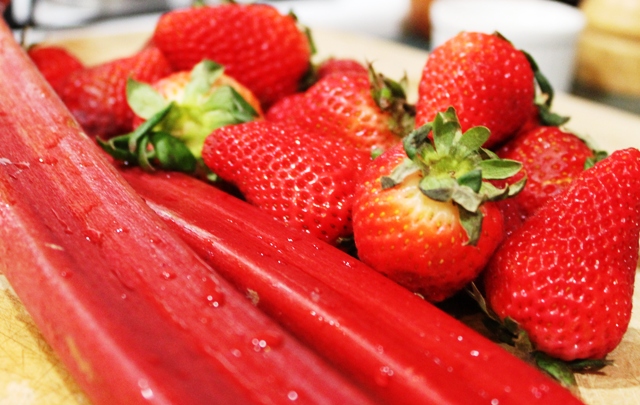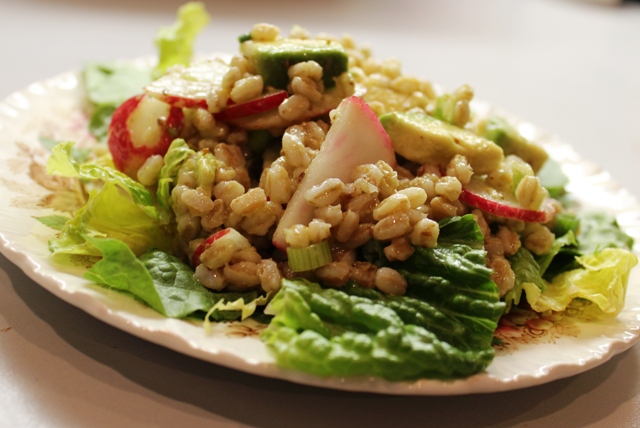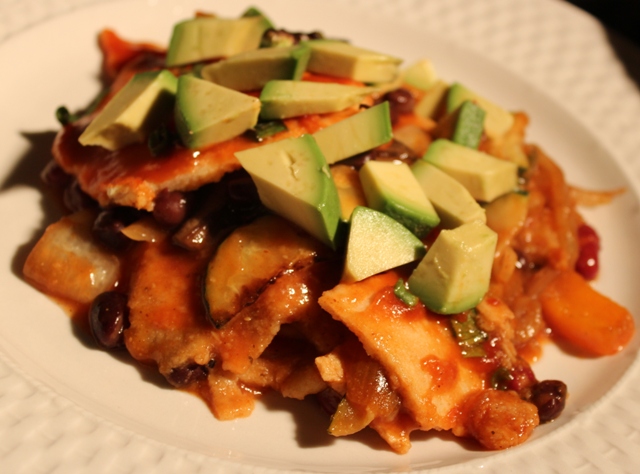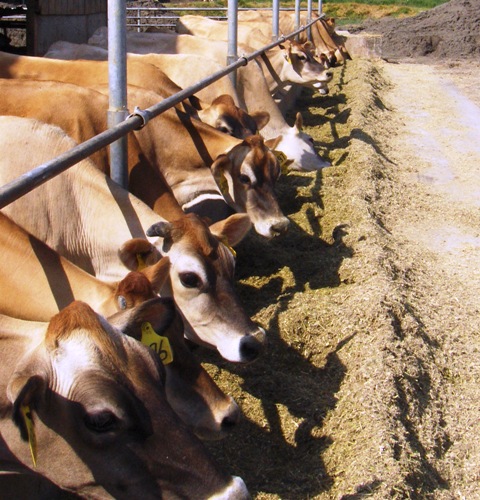
I haven’t talked about it much here on the blog, but starting in March I began researching for my dissertation on dairy farming. Most of my time for the past few months has been spent trying to make contacts for fieldwork, doing online research, reading, making to-do lists, trying to organize my thoughts on post-its and a white board, and finally getting into the ‘field’ to see the ways in which dairy cattle are farmed and sold. Part of the reason for my silence about this process on the blog is that I’m honestly not sure how detailed I’m allowed to be here (for Institutional Ethics Review Board reasons). But, perhaps the more prominent reason for my silence is that the blog has been a kind of respite from this work—a place where I can write cheerfully about veganism, events, and recipes and not about the difficulty of confronting the reality of animals’ lives in the food industry. The blog allows me, each day just for a few moments, to forget the details of my research on the dairy industry and think about cheerier things. And for that, I’m grateful. But I also feel a bit weird not sharing at least some of my process with you all. I imagine as I get closer to finishing the dissertation, after I’ve gotten parts of it written, it will probably be easier to share. For now, I am very much processing what I am learning and trying to decide how to think and write about it. And so, I’m introducing my reactions here rather gingerly.
For those unfamiliar with the lives of dairy cows in the U.S., the majority of heifers are impregnated (generally via artificial insemination) at 15 months of age. Their gestation period is 9 months (like humans’) and so they give birth for the first time at 24 months of age. After that, the cows are impregnated and give birth to one calf per year. They have 3 months each year when they are not pregnant, but are still being milked three times per day during this time. Dairy cows are milked three times per day for at least 300 days out of every year. The calves who are born to the cows are removed from their mothers usually within 2 days of birth and are sold to livestock buyers who send them to slaughter or raise them for veal or beef. Many of the female calves are raised up to be dairy producers, but male calves are almost exclusively destined for meat production. Male calves are slaughtered for meat more directly, but when dairy cows are determined to be no longer productive enough (meaning their reproductive capabilities and milk output is outweighed by the economic cost of feeding and caring for them), they are also sent to slaughter. Dairy cows usually go to ground beef production because their bodies are worn out in a way that does not produce high-quality meat. If you eat a burger at a fast food chain it is likely that you are eating a dairy cow. Depending on the size and scale of the farm, some of the details may differ–for instance, on smaller farms, cows may live to be 10-12 years of age and give birth to 8-10 calves in their lifetime, whereas larger farms may slaughter the dairy cows at 3-5 years of age (cattle have a natural lifespan of 20+ years). In general, though, farming dairy cattle is dependent on calculating the economic expense of maintaining the animal and weighing it against profit gained from the milk the animal produces.
When Timothy Pachirat was here in Seattle for several events organized by the Animal Studies Working Group at the UW, we talked a bit about the research process. Before, during and after his research in a Nebraska slaughterhouse, he was not thinking much about the animals themselves in the slaughterhouse and he had continued to eat meat. It was not until very recently, after the book was completed, that he met a cow at a sanctuary, had a moment of recognizing that cow as an individual with interests, and became vegan. Now that he had had this moment of awakening, he was not sure if he would be able to go and do the same research he had done. To be clear, he did not regret the research he did for the book. But we talked about the difficulty of witnessing and/or participating in the slaughter of animals for food, the sale of farmed animals into slaughter, and the lives of animals tied to commodity extraction when our emotional and ethical commitments lie in caring for and about animals in ways that do not involve farming them. I’ve thought about this tension quite a bit as I’ve entered into a couple of different spaces where dairy cattle are farmed and sold–a farm and an auction yard.
When I was doing my MA thesis on ‘humane slaughter’ in the meat industry, I went back and forth about whether or not I actually needed to go and see an animal being slaughtered. I found industry-produced videos of slaughter, and decided that (partly in the interest of time and ease of getting the research done) I didn’t need to go and witness it firsthand. However, part of me wondered if I would even be able to handle it when confronted with the slaughter of an individual animal in front of me. Would I be able to just stand there and watch? What is the role of witnessing and not doing anything to stop that animal from being slaughtered? Would I cry or betray my emotional reaction to this animal’s death? How would I balance my role as a researcher with my commitment to advocacy for animals?
These questions have come up a number of times as I embark on this new research relating to animals’ experience of the food system. My fears were partly that I would break down or not be able to handle it, but perhaps my greater fear was that I would be able to handle it, and what would that say about me? I shocked myself with my calm reaction in the moment to witnessing three pigs being slaughtered at the farm next to Pigs Peace Sanctuary, for instance. And I shocked myself again when I went to the dairy farm and the auction yard and found myself joking around with the people there and asking questions easily about quality of meat, prices of various animals, questions about breeds and milk output, etc.
I’ve been feeling a bit uneasy about this calmness in facing these practices, wondering if I’m some sort of moral monster that even with my heart and mind open to the plight of individual animals in the food system, I am able to flip a switch and confront it without flinching. It’s not that I have no emotional reaction at all in the moment, but it’s like, I see something and I think “Oh god, that’s heartbreaking.” And then I tuck that thought away and proceed. This process happens in an instant. Reflecting on this compartmentalization further, I think I’ve realized that the experience of researching is not about me or my own emotions. Indeed, I am a firm believer that it is absolutely essential to recognize that we are all emotional beings, and that these emotions have an important place in our research. And yet, in order to do this work, I have to let these emotions arise and then quickly find a way to set them aside. Arise, abide, and cease. The research process has become about looking and learning with the clearest and most open eyes and mind to make the most honest report possible.
I was at an event on Friday put on by my department and I found myself chatting with one of our delightful faculty members. I was telling him about my research, filling him in on some of the details of what I was learning. He was genuinely surprised by some of what is involved in our food production. Toward the end of the conversation, he said “I really have no idea how you keep such a sunny disposition in the face of all of this. It’s heavy.” I laughed and said something like, “Well, what else am I going to do? I’d go crazy otherwise.” I have a tendency toward depression and anxiety–genetic predisposition and all that–and certainly, there is a real undercurrent of a persistent low- to mid-grade depression that has settled inside me relating specifically to the work I’ve chosen to do in my life. But because I know that darkness is there, because I know that it could very easily swallow me up, and because I know my being depressed is not going to inspire change, I try to keep what this faculty member calls “a sunny disposition”. Part of me, I think, wants to set a good example and say to the rest of the world: “Look, you can confront the truth of where our food comes from, you can let it change you and your behavior, it can be depressing, and it doesn’t have to kill you. You don’t have to look away and forget what you’ve learned. You can face it and, rather than getting swallowed up by it, you can turn it into something positive.”
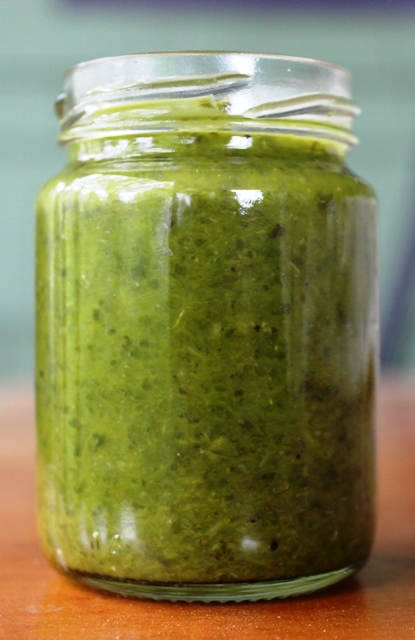
 Follow
Follow




